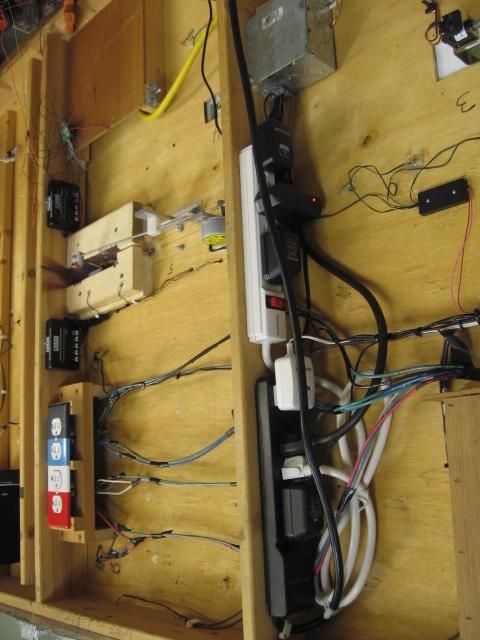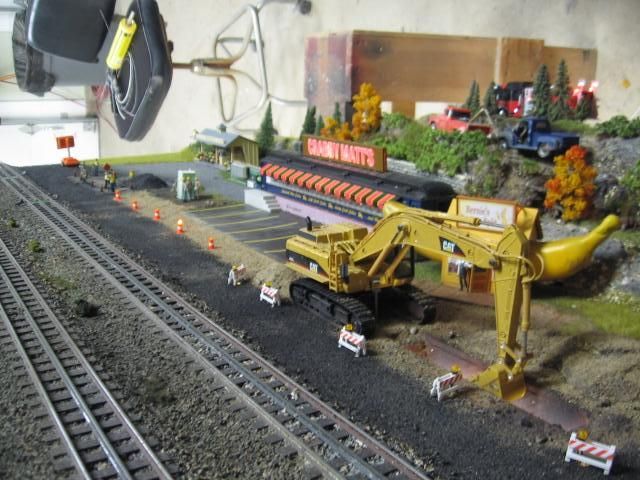I've come to an impasse with a Menards building and power adaptors. I generally like their buildings but the hook up to power is cumbersome as I run the cords under the layout I need to cut the wire, run through a hole in the plywood, and then splice and solder back together to the barrel plug wire lead. I've never had a problem in the past because I always hook up the wire exactly as it was cut (there's a dashed line on one lead and dots on the other making it easy to match).
In one building's case, Sprecher Brewery, however, it would not light back up after re-attaching the wires. It had tested fine when first purchased, so I knew it worked. I even hooked up a new Menards 2 amp adaptor, and a no-go. Voltage registered around 0.86 volts, not even close to the 4.5 volts. I then tried the adaptor on another building and it lit up and registered around 4.5 volts, so I think the adaptor is ok.
After messing around for the better part of two nights, I realized that I may have swapped out the original barrel plug for another one as I've got a half dozen or so laying around. (also purchased at Menards); and I wondered does it matter how the two wire leads from the power adaptor go into a barrel plug, and then reversed the wires so now the dashed line on one lead goes to the dots on the other and vice-versa, and what do you know the building lit up?! What I don't know however if there is something fundamentally wrong with this building; and FWIW I tried both the internal connection under the structure and the port on the outside wall, eliminating the possibility that one was defective.
Does it actually matter how the power leads from wal transformers go into the barrel plug, and thus you cannot mix the wires up? I didn't think electricity cared what wire it flows into a load through so long as there's a circuit made, and no shorts of course.





























